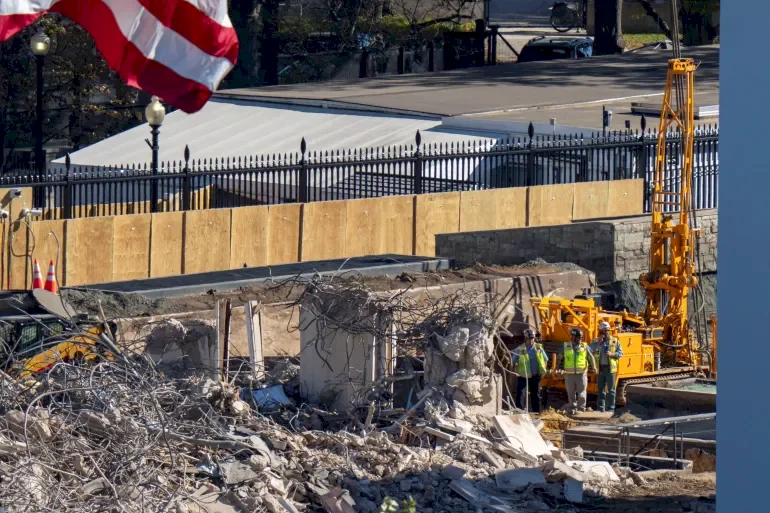
The Economist: History Always Warns Leaders Who Renovate Official Residences
SadaNews - The British magazine The Economist discussed the project of U.S. President Donald Trump to build a new ballroom at the White House, considering it a new chapter in the long history of political leaders' tendency to transform official residences into symbols of luxury and vanity.
The project, whose details vary regarding size and cost ranging between $200 and $300 million, follows an executive order signed by Trump to adopt "classical architecture" as the official style for state buildings, a step critics viewed as manifesting his obsession with imperial appearances, while his supporters see it as an important decision.
The magazine notes that when leaders call upon architects and interior designers, it reflects an excessive sense of self-importance and vanity.
It mentioned that King Louis XIV of France, who ruled from 1643 to 1715, spent a huge fortune, burdening his subjects with a cost of 100 million livres tournois (which is likely equivalent to about $2.6 billion today), to transform a small hunting lodge into the lavish Palace of Versailles, which became a stark embodiment of class differences before the monarchy ended in the guillotine.
In the 1980s, Romanian leader Nicolae Ceaușescu spent a third of his country's budget on the "People's Palace" before being killed by army elements after a popular revolution.
The magazine recalls similar recent cases, including Jacob Zuma's decision after being elected president of South Africa in 2009 to turn his family farm into a luxury complex under the pretext that it needed "security upgrades," which included a massive swimming pool and a luxury shelter for his herds of cattle.
His justifications for building the complex from the public treasury were extremely strange, as he claimed that a stray cow could trigger a false alarm, and that a "firefighting pond" was necessary in case one of the thatched roofs caught fire.
The installation of a luggage elevator at the official residence of the Prime Minister of Australia in 2016 sparked widespread outrage after it was revealed that its cost was AUD 83,500 (about USD 62,000).
Moreover, wallpaper estimated to cost £840 ($1,155) per roll contributed to the downfall of Boris Johnson, Prime Minister of the United Kingdom from 2019 to 2022, after he used it to decorate his apartment in "Downing Street."
But the most extravagant list, The Economist reported, belonged to former Ukrainian President Viktor Yanukovych, who made improvements to his residence that included taxidermied lions on the walls, shields and swords, a white Steinway piano, and an artificial lake with a replica ship adorned with chandeliers worth $97,000. After his escape, the house was opened to the public to become a "museum of corruption."
The Economist concludes that Trump’s project, even if he bears the costs of its implementation, will still haunt him with the "ghost of history," to the extent that his critics compare him to the Palace of Versailles in Paris.

High-level sources reveal to SadaNews: Washington seeks to hold a Gaza Reconstruction Conf...

Leader of an Armed Gang in Gaza Appeals to the World to Unite Gangs under a Security Appar...

Yedioth Ahronoth: America Requested Israel to Take Responsibility for Removing the Rubble...

From Areas Controlled by Israel in Gaza.. Anti-Hamas Groups Seek a Permanent Role

Updates: Salama Warns of Huge Financial Issues and Reveals Anticipated International Suppo...

Updated: Salama warns of huge financial issues and reveals anticipated international suppo...

Update: Salama Warns of Huge Financial Issues and Reveals Expected International Support

